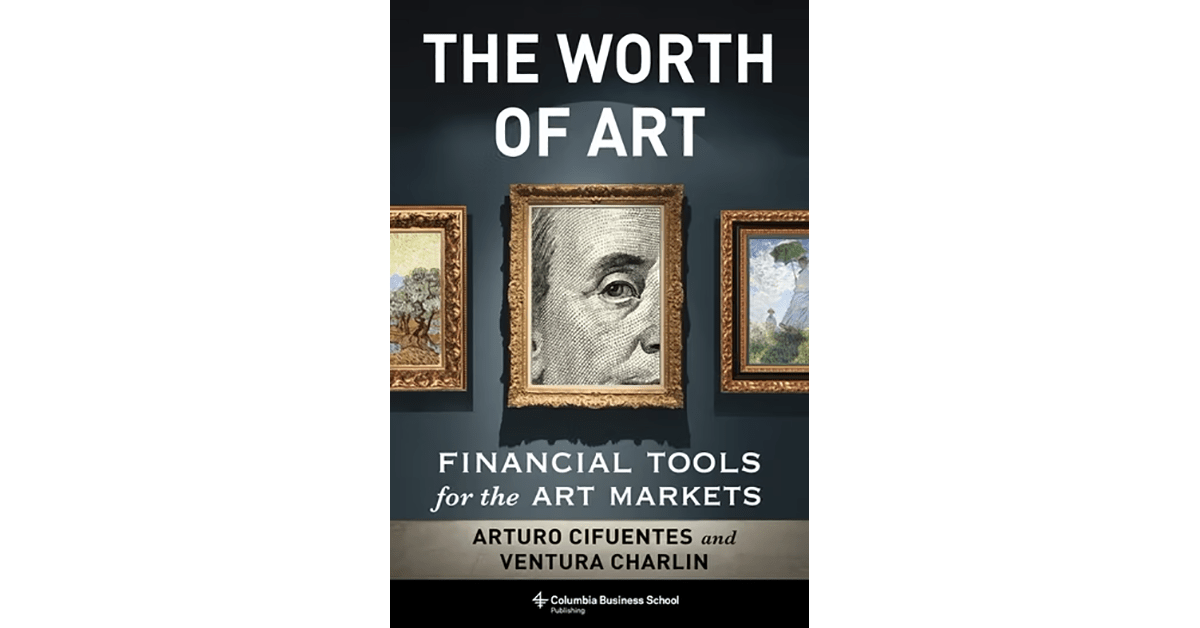- The Worth of Art: Financial Tools for the Art Market by Arturo Cifuentes and Ventura Charlin offers achievable objectives for navigating the art market, such as determining how the market values different works by an artist and estimating returns on the artist’s overall body of work.
- The book discusses quantitative techniques that yield insights into the art market, such as the impact of size and composition on auction prices and the influence of location on the price of a painting.
- Estimating returns and diversification effects for artworks is challenging due to the infrequent nature of art transactions, but the authors provide sophisticated mathematical methods to address these challenges.
- The authors also explore topics such as art-secured lending, the risk of guaranteeing minimum auction prices, and the potential uses of artificial intelligence in classifying artworks.
- The book is valuable for individuals interested in art investment and can also offer insights for investment professionals in other asset classes, challenging conventional notions of risk and diversification.
Arturo Cifuentes and Ventura Charlin’s book, The Worth of Art: Financial Tools for the Art Market, offers a realistic approach to navigating the art market. While it doesn’t provide a magical equation for predicting future hot artists or stock-like returns for artworks, it does provide achievable objectives for understanding how the art market values different works by an artist and estimating returns on their overall body of work.
The authors, who are research associates at CLAPES-UC in Chile and reside in New York, use quantitative techniques to uncover interesting findings about the art market. For example, they reveal that the size of a painting can impact its auction price, with larger works generally commanding higher prices. However, prices decline for extremely large works as they can only be displayed in limited spaces, limiting the number of potential bidders.
The authors also explore the influence of composition on auction prices. They find that the inclusion of one or more persons in a painting positively affects its price, while nudes and landscapes can reduce the price per square centimeter. Additionally, they discover that the framing format (vertical or horizontal) of a painting can impact its price per square centimeter.
Location also plays a role in art prices, with the authors finding that a painting sold in New York is likely to fetch a higher price compared to elsewhere. This finding suggests some inefficiency in the Renoir market, as it defies the law of one price.
The book acknowledges the challenges of estimating returns for artworks, which change hands infrequently compared to securities. The authors use sophisticated mathematics to address these challenges, but they also provide explanations of their methodology for readers who may not be familiar with advanced mathematical concepts.
In addition to discussing artworks, the book also touches on topics such as art-secured lending and the risk of guaranteeing minimum prices at auctions. The authors report that artificial intelligence (AI) has not outperformed experienced appraisers in predicting auction prices but suggest its potential in helping classify artworks by style or movement.
The book’s insights extend beyond art investment and can be valuable for investment professionals in other asset classes. The authors criticize conventional securities analysis practices, challenging the standard calculation of diversification benefits. They highlight the time dependency of correlations and emphasize the need to incorporate value at risk and real returns when assessing risk-reward ratios.
Overall, The Worth of Art is a valuable resource for individuals interested in art investment and can offer new perspectives for investment professionals in other asset classes. It provides achievable objectives for understanding the art market while challenging conventional notions of risk and diversification.







